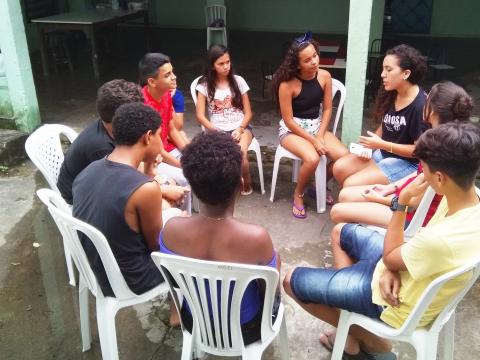A model to enhance children and young people’s participation

By Patricio Cuevas-Parra
The realisation of children and young people’s right to participate in and influence decision-making processes remains challenging. However, several typologies have been developed to understand, unpack and support the implementation of Article 12 of the UN Convention on the Rights of the Child (UNCRC) which outlines children and young people’s right to participation. These models have been used to operationalise the legal concept of participation and have been developed further by the UN General Comments on the Right to be Heard (United Nations, 2009).
In this context, Lundy’s model of participation emerges as an influential typology that includes four interrelated elements: space, voice, audience and influence. Space refers to giving children and young people the opportunity to express a view, voice means that they must be facilitated to express their views, audience reflects the obligation to listen to children and young people’s views, and influence means that these views must be acted upon, as appropriate (Lundy, 2007, p. 933).
However, most participation typologies, including Lundy's, have not included enough analysis of the different factors contributing to children's and young people's identities, such as age, gender or race, and how these intersect with inequalities and exclusion. Hence, it becomes crucial to rethink participation typologies through a lens that recognises that children and young people are part of social structures that frequently oppose their active participation. It is also important to consider how the different social identities that form children and young people’s childhoods have an impact on the extent to which they are perceived to be active participants.
Drawing on the Lundy model, my research paper Multi-dimensional lens to Article 12 of the UNCRC: A Model to enhance children’s participation interrogates social identities, power relations, exclusion and inequalities between children and adults and between children themselves. The paper presents my ‘multi-dimensional lens to Article 12’ model which emerges from different theoretical perspectives and methodological proposals to help practitioners, researchers and children and young people themselves understand and implement their participation rights. My model was informed by empirical research with children and young people in Brazil, which found that participation is intrinsically connected to children and young people’s social identities and contexts, revealing exclusion and inequalities.
By focusing on three circles - intersecting identities, enabling environments and dimension factors - my model's key components are interconnected and influence one another. Concerning the intersecting identities component, my model is built on the understanding that the right to participate is not context-free, and cultures, values and beliefs have a crucial role in confining or expanding this right.
Data from my study in Brazil showed that when social identities intersect with inequalities, it becomes more challenging to realise the right to participation. Children and young people who participated in the research pointed out that their social identities were intrinsically related to their privileges or disadvantages, which determined their opportunities to participate equally. This shows the critical need of taking into account these factors in order to mitigate and redress social inequalities.
References
Lundy, L. (2007) ‘“Voice” is not enough: Conceptualising Article 12 of the United Nations Convention on the Rights of the Child’, British Educational Research Journal, vol. 33, no. 6, pp. 927–942 [Online]. DOI: 10.1080/01411920701657033.
United Nations (2009) ‘General Comment No. 12: The right of the child to be heard’, [Online]. Available at https://www2.ohchr.org/english/bodies/crc/docs/AdvanceVersions/CRC-C-GC-12.pdf (Accessed 10 November 2018).